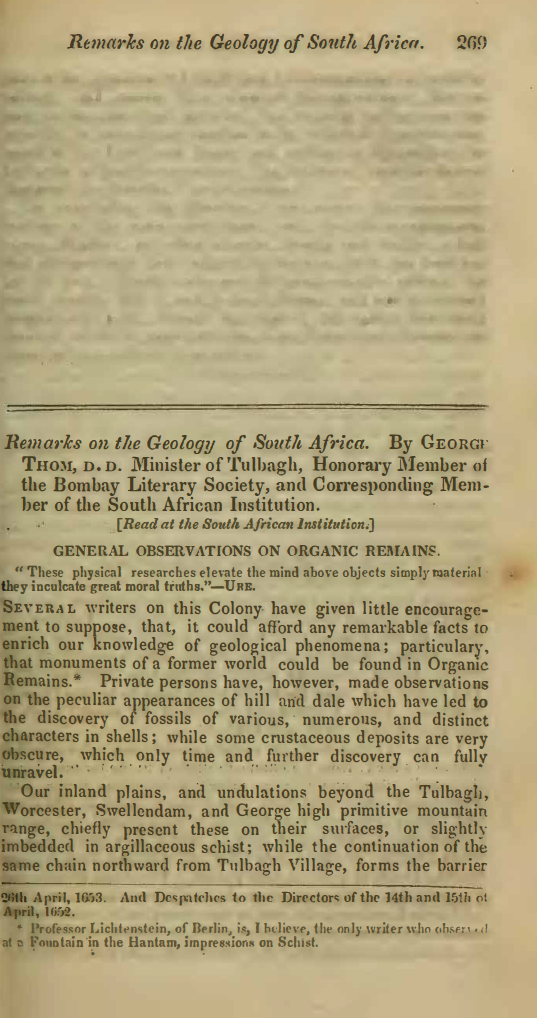Remarks on the geology of South Africa
DOI:
https://doi.org/10.21504/saqj.13.2649Keywords:
Geology, Paleontology, Organic remains, Fossils, Crustaceous deposits, Argillaceous Schist, Calcareous Rock, Trilobite, Encrinite, Fossil coral, Tulbagh, Worcester, Swellendam, George, Beaufort, Clan William, Winterhoek Mountain, Cogmans Kloof, Cold BokkeveldAbstract
This article presents early 19th-century geological observations on South Africa, specifically addressing the discovery and nature of Organic Remains (fossils) across the Cape Colony, contradicting earlier assumptions that the region lacked such valuable monuments of a former world.
The author, Rev. Dr George Thom, notes that fossils—chiefly shells, trilobites, and encrinites—are predominantly found on the surfaces of inland plains and slightly embedded in argillaceous schist beyond the main primitive mountain range (Tulbagh, Worcester, etc.). He highlights the Karoo hills as the most abundant sources of specimens, providing evidence of an "ancient ocean; or of a great aqueous catastrophe."
Dr Thom credits a Mr Enslin with the first crucial recognition of the Shelly strata as true Organic Remains around 1804 or 1805 at the Keizie Baths. He distinguishes these older fossils, often found enveloped in hard schist or rounded pebbles, from more recent calcareous shell deposits found along the eastern and western coasts. The author reports collecting numerous specimens, including a unique cockle/muscle, a siliceous pebble of fossil coral from the Orange River, and many examples of the trilobite and encrinite (stone lily), concluding that the region offers a clear record for the "Geological inquirer" to read and understand.
Downloads

